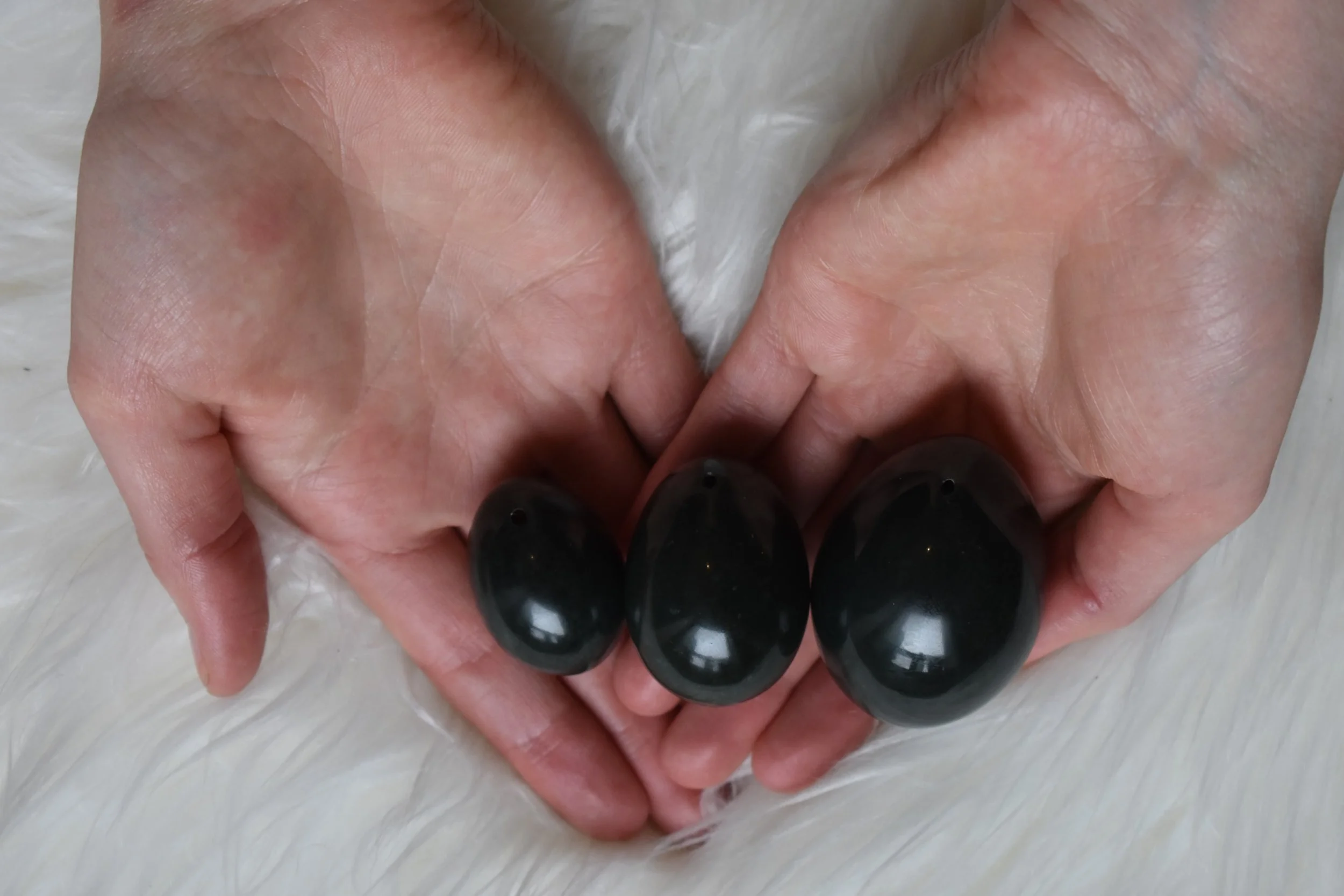Physical Therapy for Painful Intercourse: A Guide for Women
Sex and intimacy are meant to be among the most thrilling, pleasurable experiences a woman can have. Yet for many women, what should be ecstasy is instead shadowed by discomfort or even pain. Painful intercourse, known medically as dyspareunia, is far more common than most realize, yet it remains one of the most under-discussed experiences in women’s health.
Too often, women who experience pain during sex internalize it. Many withdraw from intimacy altogether, carrying an invisible burden that affects their relationships and their connection to their own bodies.
But pain is how your body communicates with you.
Through the gentle, restorative practice of pelvic physical therapy, women are finding their way back to pain free intercouse. This holistic can relieve the physical tension and pain and it also addresses the emotional imprints that have kept the body braced and guarded.
What Is Dyspareunia? (Painful Sexual Intercourse)
Dyspareunia, or painful intercourse, describes any pain that happens before, during, or after penetration. The pain can feel sharp, burning, or deep and aching. For some, it’s felt right at the vaginal opening, making penetration difficult or impossible. For others, it sits deeper inside the pelvis, as though something is being hit or pulled. These sensations are the body’s way of signaling that something in the pelvic system is not at ease.
There are two main physical layers to this pain. The first comes from the pelvic floor muscles, which are meant to relax and open during arousal. When those muscles become tight or guarded they lose their ability to expand comfortably. The result is a feeling of resistance or burning at the entrance of the vagina.
The second layer involves deeper structures of the pelvis, including the uterus, ovaries, and supporting tissues. Conditions like endometriosis, pelvic inflammatory disease, uterine fibroids, scar tissue from surgery, or chronic inflammation can all cause deep pelvic pain during sex. Even hormonal changes that reduce natural lubrication can make friction feel like sandpaper, intensifying pain signals.
The emotional toll it takes is immense. Many women start to associate sex with pain, leading to fear or anxiety before intimacy even begins. That anticipation triggers muscle tension, which in turn causes more pain, which is a physiological cycle that the nervous system reinforces each time sex becomes uncomfortable.
This pain-fear cycle of fear → tension → pain → more fear, is what keeps dyspareunia alive. The body learns to expect pain, and the mind prepares for it, creating an ongoing feedback loop that can’t be broken through willpower or avoidance. Healing requires releasing the physical restrictions and retraining the body to feel safe again in moments of intimacy.
Why Pelvic Floor Physical Therapy for Painful Intercourse?
At its core, pelvic physical therapy works directly with the tissues, muscles, and fascia of the pelvic floor, the deep foundation that supports sexual function, bladder control, and core stability. When those muscles become overactive or chronically tight, they can create a constant state of guarding, making penetration painful or impossible. Through gentle, precise techniques, including internal and external muscle release, breathwork, posture retraining, and nervous system regulation, physical therapy helps these muscles relearn what softness and openness feel like.
Many women also describe a profound emotional shift as they begin to experience their bodies without pain for the first time in years. The simple experience of pain-free touch or penetration can reignite a sense of confidence and closeness with oneself and with a partner. When the body no longer braces in fear, the mind begins to relax too. This creates a new feedback loop of safety → relaxation → pleasure → more safety.
Exercises and Self-Treatment for Painful Intercourse
Diaphragmatic Breathing
Many women with painful intercourse have pelvic floors that stay partially contracted all the time, even outside of intimacy. The first step in retraining this is to reconnect the diaphragm and pelvic floor, two muscle groups that mirror each other. When the diaphragm expands on inhale, the pelvic floor should lengthen; when you exhale, it gently recoils upward.
In therapy, this breath is used to down-regulate the nervous system and reduce the reflexive tightening that happens when the body anticipates pain.
Wand Work
For women whose pain stems from localized muscle tension or “trigger points,” internal release with a crystal wand can be life-changing. You can use it to gently press on tight muscle bands inside the vaginal canal, the same points a physical therapist treats during manual sessions.
The pressure applied to a trigger point helps the muscle fibers stop firing and lengthen. It also stimulates local blood flow, which helps the tissue recover from the chronic ischemia (lack of oxygen) caused by years of gripping. The slow, intentional pressure also retrains your nervous system to interpret internal touch as neutral or even pleasant, instead of painful.
Yoni Eggs
Though their roots are ancient, in a pelvic therapy context, yoni eggs are used less for tightening and more for proprioceptive feedback and teaching your brain how to locate and coordinate your pelvic floor muscles. After chronic pain, many women lose awareness of where these muscles even are.
The egg gives gentle resistance inside the vaginal canal. When the muscles engage around it, you can feel the contraction clearly, and when they release, you can sense the drop. This awareness helps women distinguish between activation and relaxation, a skill that’s essential for pain-free sex.
Kegel Training (with Relaxation)
Kegels are often misunderstood. In many cases of dyspareunia, the pelvic floor isn’t weak but over-recruited and the muscles are strong yet uncoordinated, staying partially “on” all day. The solution is to restore control and range of motion, to be able to contract and fully release.
Coordinated Kegels reestablish normal tone and timing. The rhythmic squeeze-and-release improves blood circulation and neuromuscular control, so the muscles can yield during penetration rather than brace.
Yoga for Pelvic Health
Certain yoga postures are directly therapeutic for pelvic floor dysfunction. Positions that open the hips, lengthen the adductors, and release the lower back help decompress the pelvic bowl. Gentle stretching improves mobility in the pelvic fascia and calms the nervous system through slow, regulated breathing. This reduces the sympathetic “fight-or-flight” tone that often keeps the pelvic muscles tight and reactive.
The Empowered Woman’s Healing Vaginal Pain Course
Since I launched The Empowered Woman in 2018, I’ve learned of so many women living with pelvic pain, particularly pain in the vulva or vagina that persists and is unexplained by doctors and gynecologists.
Over the years I’ve created products and courses to help women remember how to honor themselves and feel good in their own bodies again. Through this, I am deeply honored that thousands of women have learned to connect with their sensual selves.
My newest offering is designed to specifically address what many women live through silently, with shame and without the guidance that’s deeply needed.
This course, called Healing Vaginal Pain, is devoted exclusively to healing vaginal and vulvar pain, and I’ve co-created it with my inspiring client-turned-friend, Natasha.
Natasha lived with vaginal pain and vulvodynia for many years and walked an inspiring journey of healing. The wisdom she carries from her experience forms the foundation of this course.
When I started working in female sexual wellness, one truth kept revealing itself to me.
The body cannot heal until it feels safe.
Safety is the language of the nervous system. Your nervous system’s first task is to protect you and it does that by constantly scanning your surroundings and even your own thoughts for danger.
When it senses threat - whether through sensorial data, thoughts, or memories, the body shifts into a state of defense.
This defensiveness is expressed through various kinds of “alarm bells” in the body, ranging from frozenness, tension, contraction, emotional reactivity, and so on.
Many of us override these alarm bells; we push through, rationalize, or further dissociate from what we feel. But when these alarms are never tended to, the body keeps ringing them. The energy that was meant to move through you gets trapped as patterns of contraction and dysfunction.
Vaginal pain is how your system says, something still feels unsafe. What may have begun as an emotional or energetic defense eventually becomes physical.
When you begin to create safety consciously through dedicated attention and nourishment, your body can remember what ease feels like. And unprocessed emotions arise to be released.
In 11 modules and 57 lessons, you'll learn how to recognize your body’s protective patterns and how to build containment so that the safety you cultivate can remain, long enough for real healing to occur.
Manual Therapy Techniques for Pelvic Floor Rehabilitation
When penetration feels sharp, burning, or like you’re “hitting a wall,” the root cause is often pelvic floor muscle tightness, a deep, protective gripping pattern your body developed over time. These muscles are meant to expand and contract fluidly during arousal, orgasm, and release, but when they’ve learned to stay tight, they can’t yield to penetration without pain.
During ,anual therapy techniques, a pelvic floor physical therapist will first assess the tone and texture of your pelvic muscles through gentle internal touch, using one gloved, lubricated finger. They’ll locate specific points that feel tender or dense, often the same areas that trigger pain during sex, and apply slow, sustained pressure until the tissue begins to soften. Over multiple treatment sessions, this allows the vaginal walls to become more elastic and receptive, reducing pain intensity.
Once you’ve learned the technique safely, self manual therapy can be an incredibly empowering part of your healing aswell. Using a smooth wand or even a clean, lubricated finger, you can gently explore your own vaginal muscles at home. When you find an area that feels tight, breathe into it, hold light pressure for 60–90 seconds, and imagine that spot melting open. Over time, these short, mindful sessions teach your body that it’s safe to relax and be touched again.
FAQ
-
Can physical therapy help with painful intercourse?
Yes. Physical therapy for painful intercourse (dyspareunia) is one of the most effective, evidence-based treatments available for women experiencing pelvic pain, pelvic floor dysfunction, or chronic pelvic pain. Specialized pelvic floor physical therapy targets the underlying causes of painful sexual intercourse, such as pelvic floor muscle tightness, muscle spasms, restricted blood flow, and heightened pain sensitivity.
A trained pelvic floor physical therapist uses manual therapy techniques such as myofascial release, internal and external muscle trigger-point work, and pelvic floor relaxation strategies to release areas of tension and improve muscle function. These hands-on methods help normalize tone in the vaginal muscles, allowing the body to respond more comfortably to arousal and penetration.
-
How do you exercise your pelvic floor for painful intercourse?
Pelvic floor muscle training for painful sex is less about “tightening” and more about learning how to relax, release, and coordinate your pelvic muscles again. When the pelvic floor is chronically contracted the muscles can’t expand comfortably during sexual intercourse.
A physical therapist will guide you through gentle pelvic floor muscle exercises, pelvic drops, and diaphragmatic breathing to teach your body how to let go of unnecessary tension. These movements help synchronize the diaphragm and the pelvic floor, restoring natural elasticity and improving blood flow.
Once relaxation is achieved, pelvic floor muscle training (similar to Kegel exercises, but balanced with full release) can strengthen weak areas and enhance pelvic floor muscle strength. This balanced approach improves sexual function, supports the pelvic organs, and can reduce urinary incontinence.
Some physical therapy modalities, like biofeedback, electrical stimulation, and transcutaneous electrical nerve stimulation (TENS), are used to retrain neuromuscular patterns and improve coordination.
-
What can be done about painful intercourse?
Treating dyspareunia involves addressing both the physical pain and the psychological factors contributing to it. Pelvic floor therapy is often at the center of this process. During treatment sessions, a pelvic floor physical therapist assesses your pelvic floor muscle tone, posture, and breathing patterns. If they find muscle tightness, scar tissue, or myofascial restrictions, they’ll apply targeted manual therapy and teach you self-care techniques to continue at home.
Alongside traditional physical therapy methods, many clinicians incorporate diaphragmatic breathing, relaxation training, and nervous system regulation to calm hypervigilance in the body. Addressing underlying conditions, such as endometriosis, pelvic inflammatory disease, pelvic congestion syndrome, or secondary pain from childbirth can also be crucial.
In some cases, a comprehensive physical therapy intervention is paired with hormone therapy, psychotherapy, or lifestyle modifications to enhance healing. The overall goal is to reduce pain, restore muscle balance, and improve sexual health and psychosexual outcomes.
-
Do they finger you in pelvic floor therapy?
This is a common and important question. In pelvic floor physical therapy, internal work may be part of the treatment process, but it’s always done professionally, consensually, and for medical assessment purposes, never in a sexual context. The physical therapist may insert a gloved, lubricated finger one or two inches into the vaginal canal to gently assess the tone, tenderness, and movement of the pelvic floor muscles. This allows them to locate specific areas of muscle tightness, scar tissue, or trigger points that contribute to pelvic pain or painful sexual intercourse.
This type of manual therapy, sometimes referred to as internal myofascial release, is clinically validated in numerous randomized controlled clinical trials for its ability to reduce pain, improve pelvic floor muscle function, and enhance female sexual health. It’s comparable to working on deep tissue in other muscles, just with a high degree of sensitivity and privacy.
Meet Your Author

Danelle Ferreira
Danelle Ferreira is a content marketing expert who writes for women-owned businesses, creating heart-centered content that helps brands grow and messages spread with purpose. Her passion is helping women-led brands craft stories that move people. Her journey into content creation began seven years ago when she launched Ellastrology, an astrology YouTube channel that explored astrological wisdom and human connection. But it wasn’t long before she realized her true calling was in writing, the kind that makes people feel seen, heard, and understood. Now, as a mom, a writer, and an advocate for deeper conversations, she spends her days crafting content that empowers women while staying rooted in authenticity, all from her home in South Africa, surrounded by her loving son, two noisy parrots, and two sweet dogs.







Pelvic floor muscle spasms in men are more common than most realize. This guide explains what triggers pelvic floor dysfunction and ways to relieve chronic pelvic pain.